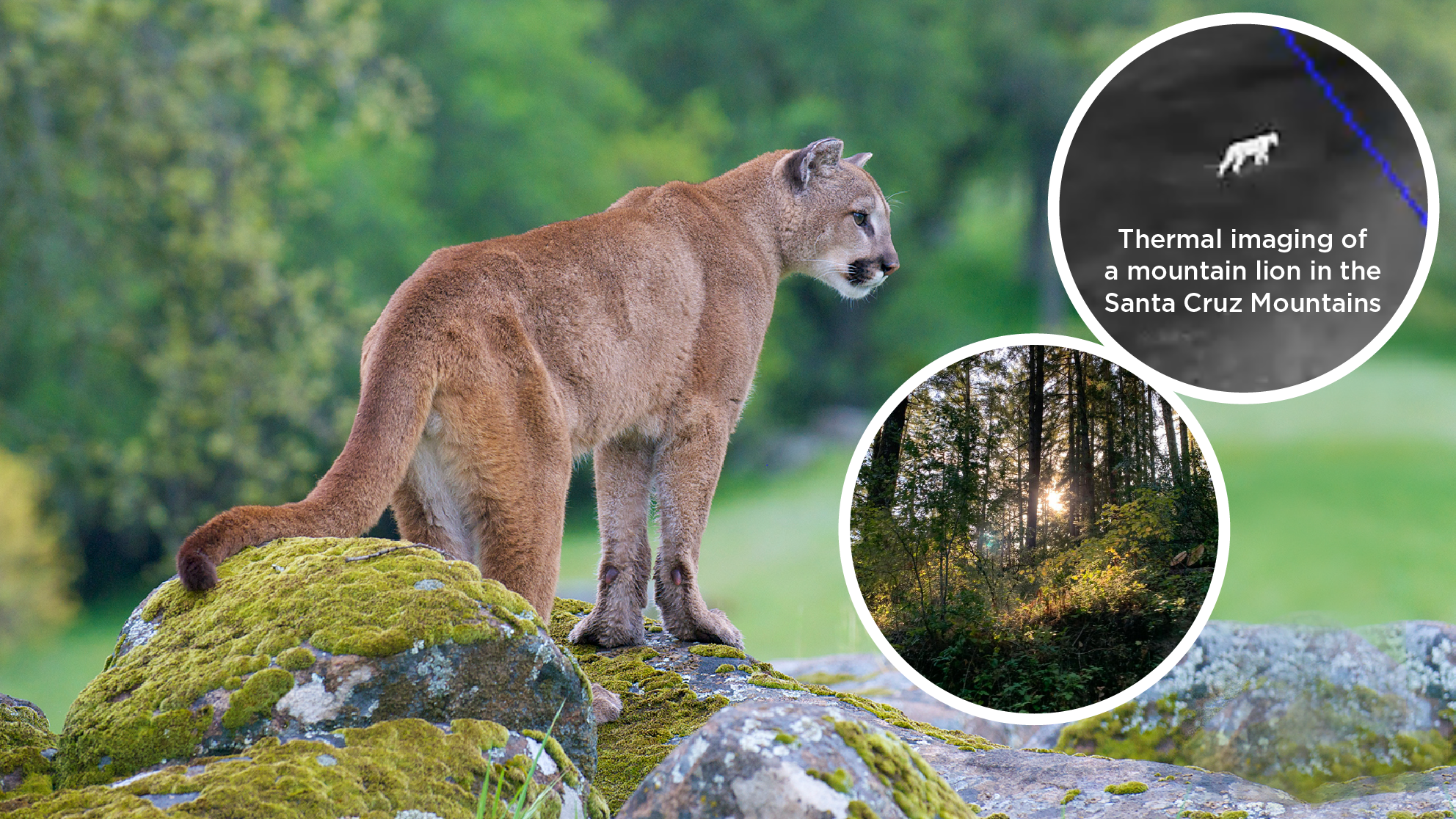Mountain lions (also known as pumas and panthers), are an important apex predator in local and regional ecosystems. Recent studies of mountain lions in the Santa Cruz Mountains estimate that the population likely comprises less than 50 animals.
Home ranges (how far they roam) for individual lions are expansive, with males roaming between 40-80 square miles, while females can span 100-150 square miles. Males are highly territorial — defending their home range vigorously from other males. Conversely, female home ranges can overlap with both males and females.
As development and human activity have encroached on the mountain lion habitat over many decades, continuous and connected habitats, along with wildlife corridors are increasingly important for the survival of this species. Likewise, stewardship and land management activities that protect, enhance or reconnect habitats for mountain lions are fundamental to the long-term viability of this population.
Observations of mountain lions and other large carnivores on SJW land suggest that mountain lions are likely utilizing this land for hunting and breeding, as well as a connection corridor for these activities in other parts of their range. SJW’s stewardship and conservation initiatives support habitat quality and connectivity for mountain lions and their preferred prey — deer. The absence of significant human activity and disturbances (e.g., roads and trails), and minimal development provides near ideal conditions for this species. Future forest health and ecological restoration work planned for SJW watershed land will continue to enhance habitat and critical habitat linkages for mountain lions and other special status species.
To further support wildlife habitat and connectivity, SJW has partnered on a multi-stakeholder wildlife crossing project led by the Midpeninsula Regional Open Space District. SJW is supporting the development of two wildlife connectivity projects near Highway 17. Read more: https://www.openspace.org/what-we-do/projects/highway-17-wildlife-and-trail-crossings
These projects will provide critical linkages for terrestrial wildlife, along with a suite of co-benefits for humans and wildlife (including mountain lions). In partnership with other local agencies and stakeholders, SJW’s continued commitment to environmental stewardship and sustainable natural resource management works to expand opportunities for wildlife and habitat connectivity through innovative stewardship and conservation.
